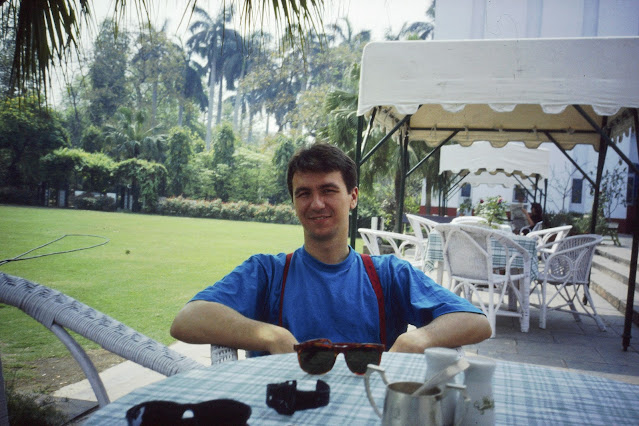Wulkan przypomina, kto tu naprawdę rządzi
17 czerwca wulkan Lewotobi Laki-Laki na wyspie Flores wyrzucił słup popiołu na wysokość 10 kilometrów. Mieszkańcy okolicznych wiosek zostali ewakuowani, część połączeń lotniczych w regionie zawieszono. Indonezja, leżąca na Pacyficznym Pierścieniu Ognia, przywykła do trzęsień ziemi i erupcji, ale każda z nich to przypomnienie o fundamentalnej kruchości życia na archipelagu.
W tle tej katastrofy naturalnej rozgrywała się jednak zupełnie inna, bardziej zaskakująca historia – polityczna.
Prabowo wybiera Putina zamiast G7
Podczas gdy liderzy G7 spotykali się w Kanadzie, prezydent Prabowo Subianto udał się do Sankt Petersburga na rozmowy z Władimirem Putinem. Decyzja o nieobecności na Zachodzie i wyborze spotkania z prezydentem Rosji była wymowna – i szeroko komentowana. Oficjalnie mówiono o współpracy w dziedzinie obronności, energetyki jądrowej oraz rozwoju sektora kosmicznego. Wśród planów pojawił się nawet pomysł budowy indonezyjskiego portu kosmicznego na wyspie Biak.
Indonezja stawia na dyplomację wielowektorową. Prabowo wysyła sygnał: archipelag nie zamierza wiązać się wyłącznie z Zachodem czy Chinami, ale będzie prowadzić niezależną grę na własnych warunkach – nawet jeśli oznacza to flirty z reżimami objętymi sankcjami.
Handel z Eurazją – strategia czy ryzyko?
W tym samym czasie władze w Dżakarcie ogłosiły, że finalizują rozmowy o umowie o wolnym handlu z Eurazjatycką Unią Gospodarczą (EAEU), skupiającą Rosję, Białoruś, Kazachstan, Armenię i Kirgistan. Nowy kierunek eksportu ma wzmocnić obecność Indonezji na rynkach alternatywnych, szczególnie w sprzedaży oleju palmowego, kauczuku i kawy.
To jednak miecz obosieczny. Z jednej strony Indonezja szuka zbytu poza tradycyjnymi rynkami i uniezależnia się od wpływów Zachodu. Z drugiej – ryzykuje utratę zaufania dotychczasowych partnerów i pogłębia zależność od gospodarek autorytarnych, które same zmagają się z izolacją.
Raja Ampat: pierwszy krok ku ochronie „ostatniego raju”
W cieniu wielkiej polityki zapadła decyzja, która może mieć długofalowe skutki dla środowiska naturalnego. Rząd Indonezji anulował cztery z pięciu koncesji wydobywczych w regionie Raja Ampat w Papui Zachodniej. Ten archipelag, uznawany za jedno z najbardziej bioróżnorodnych miejsc na Ziemi, od lat był zagrożony przez ekspansję przemysłu niklowego.
Choć jedna firma wciąż działa w regionie, decyzja władz została uznana przez ekologów za milowy krok w ochronie środowiska. Może to być początek zmiany podejścia do eksploatacji zasobów – choć doświadczenie każe zachować ostrożny optymizm.
Kraj, który szuka własnego języka
Wszystkie te wydarzenia – żywiołowe, polityczne, gospodarcze i ekologiczne – tworzą obraz Indonezji na rozdrożu. To kraj, który szuka języka własnej niezależności: jako państwo wyspiarskie, muzułmańska demokracja i rosnąca siła regionalna nie chce być ani satelitą Zachodu, ani klientem Wschodu. Chce mówić własnym głosem. Ale czy uda mu się zachować równowagę, nie rezygnując przy tym z wartości, zaufania partnerów i przyrodniczego dziedzictwa?

































